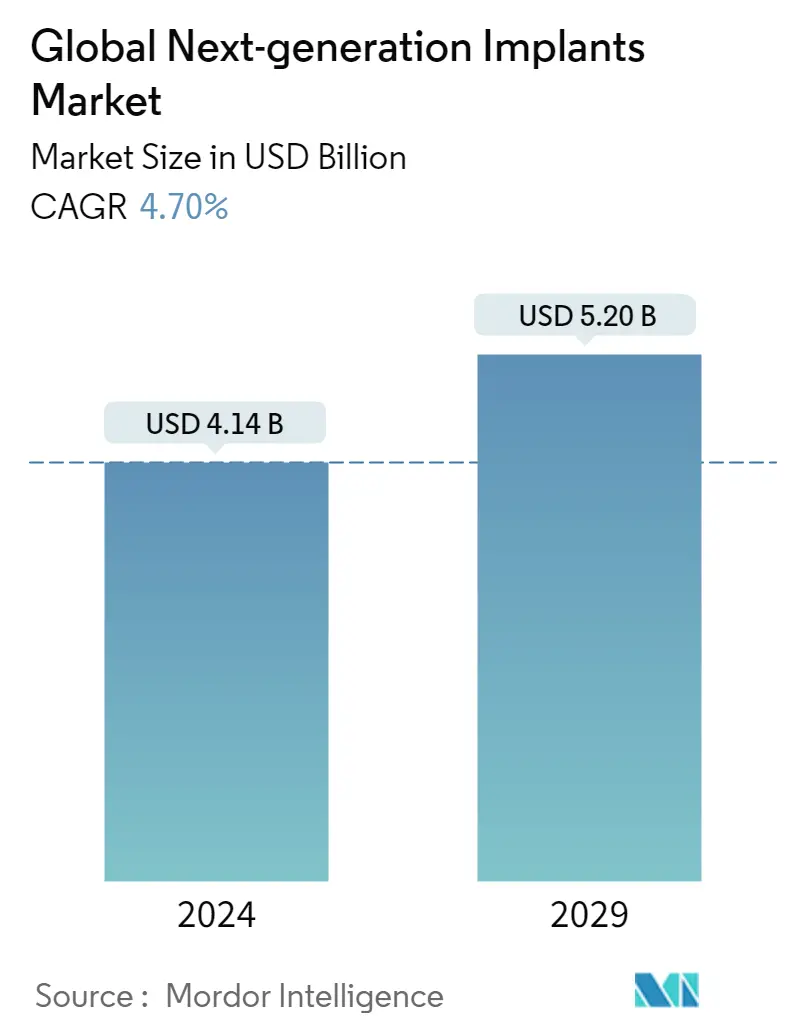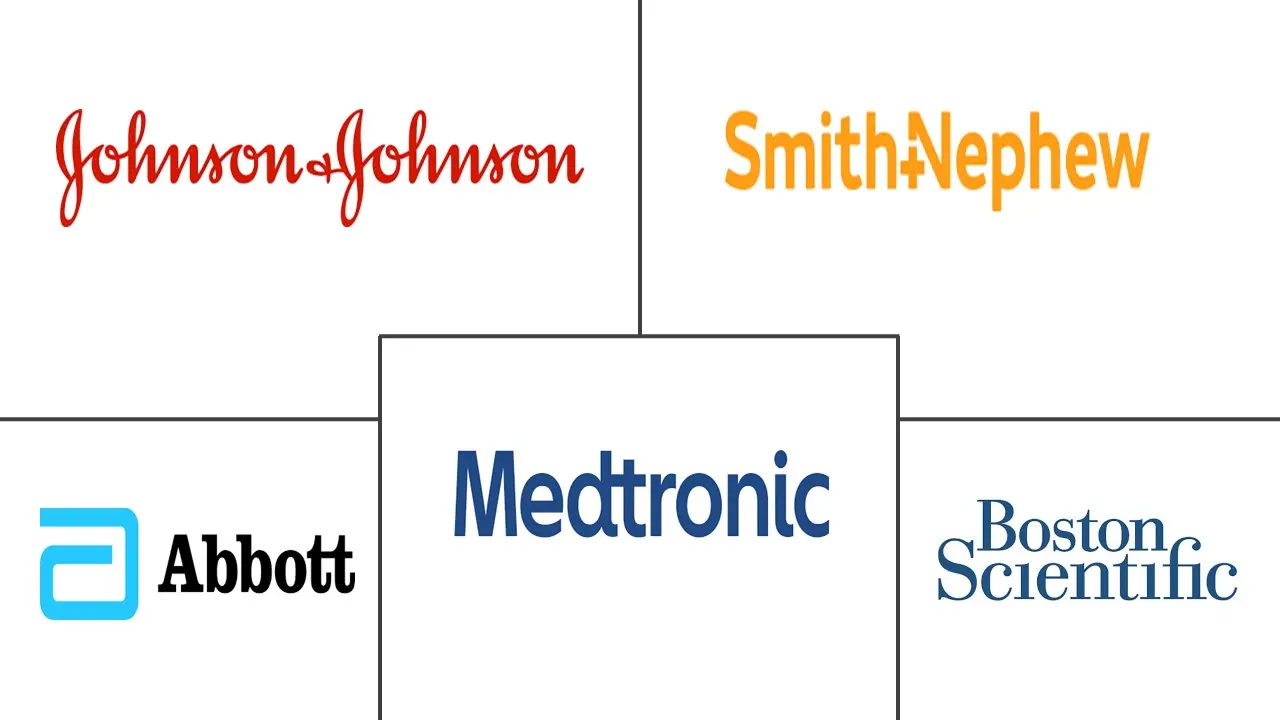Market Size of Global Next-generation Implants Industry

| Study Period | 2019 - 2029 |
| Market Size (2024) | USD 4.14 Billion |
| Market Size (2029) | USD 5.20 Billion |
| CAGR (2024 - 2029) | 4.70 % |
| Fastest Growing Market | Asia-Pacific |
| Largest Market | North America |
Major Players
*Disclaimer: Major Players sorted in no particular order |
Need a report that reflects how COVID-19 has impacted this market and its growth?
Next-generation Implant Market Analysis
The Global Next-generation Implants Market size is estimated at USD 4.14 billion in 2024, and is expected to reach USD 5.20 billion by 2029, growing at a CAGR of 4.70% during the forecast period (2024-2029).
The COVID-19 pandemic shut down population movements and transport systems across large parts of the world due to the rising COVID-19 cases. Most countries also implemented travel restrictions, which led to a decline in medical services. The number of visits to hospitals and clinics decreased with the decline in elective surgical procedures which impacted the next-generation medical implants market. The implant manufacturers encountered many challenges, including scarcity of resources, shifts in the supply and demand chain, and revenue decline compared to the growth rate in the past decades. The next-generation implant market was hindered by the COVID-19 pandemic in the short term. For instance, according to an article titled 'Cochlear Implant Surgery During the Covid Pandemic Lockdown-The KEM Hospital, Pune Experience' published in August 2022, during the COVID-19 pandemic elective surgeries such as cochlear implantation were postponed to divert medical resources to COVID-19 management. However, with the reducing severity of the COVID-19 infection, the next-generation implants market is expected to resume a strong growth rate post-COVID-19 pandemic.
The growing aging population, higher life expectancy, and an increase in the number of age-related disorders are contributing to the growth of the next-generation implant market. The geriatric population is more prone to cardiovascular, orthopedic, and dental degenerative conditions, which increases the demand for next-generation implants. According to the World Health Organization (WHO) report on Ageing and Health published in October 2021, between 2015 and 2050, the proportion of the world's population over 60 years will nearly double from 12% to 22%. The report estimated that the population of people over 60 years would have outnumbered the population of children below the age of 5 years in 2020. Also, as per the same source, about 80% of the geriatric population will be living in low- and middle-income countries by 2050. The growing older population is expected to further increase the demand for innovative treatment procedures, thereby, accelerating the growth of the next-generation implants market all around the world.Moreover, according to the World Population Ageing 2020, the largest increase is projected to occur in Eastern and South-Eastern Asia, growing from 261 million in 2020 to 573 million in 2050. The fastest increase in the number of older persons is expected in Northern Africa and Western Asia, rising from 29 million in 2020 to 96 million in 2050.
Another factor is the growing prevalence of degenerative disease and the burden of chronic disease globally. According to the National Health Institute's article on neurodegenerative diseases published in June 2022, over 6.2 million in the United States were estimated to be affected by Alzheimer's disease and over a million adults were estimated to be affected by Parkinson's in the year 2022. Age-related macular degeneration makes a significant contribution to degenerative disorders.
Additionally, technological advancements have been resulting in the development and introduction of medical implants that are more simplified than earlier available products. Various companies are currently offering more advanced implants, such as bioabsorbable stents, cardioverter-defibrillators, personalized joint replacements, and leadless pacemakers, which offer improved operation and extended battery life and allow patients to continue normal activities after implantation. The innovation by the market players is a major factor adding to the growth of the market. For instance, in June 2021, Medtronic PLC gained the United States Food and Drug Administration (FDA) clearance for Vanta, a high-performance rechargeable implantable neurostimulator. The novel product launches are expected to add to the growth of the studied market over the forecast period.
However, major restraining factors for the growth of the studied market are the high cost of next-generation implants and stringent regulatory policies for implants.
